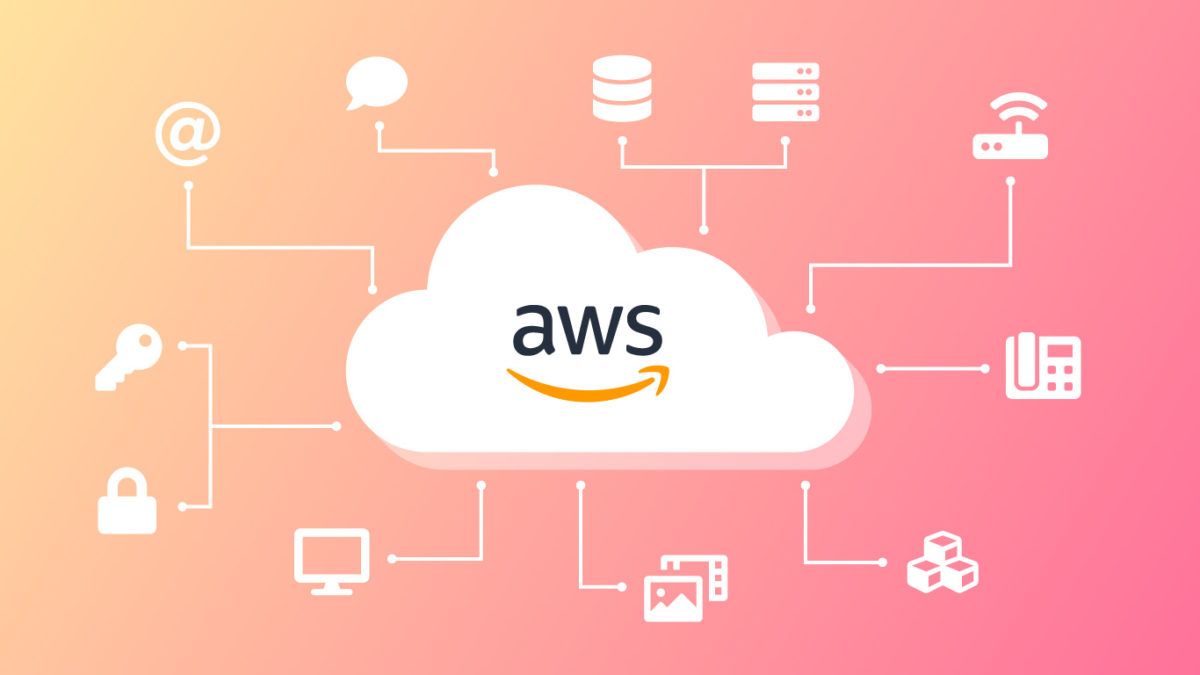Proven and experienced by millions, AWS eliminates the challenges of all types of organizations by empowering the migration of workloads to the cloud. From an on-premises environment, hosting facility, or another public cloud, you may transfer any workload—apps, websites, databases, storage, physical or virtual servers—and even whole data centers to AWS.
You can use AWS capabilities and potential to strengthen your organizational, operational, and technological competence at every step of the way, allowing you to obtain business benefits faster.
But don’t know where to start or how to go about it? In this post, I am going to guide you through AWS and AWS migration.
1. Need for Cloud Migration – Migrate to AWS Cloud
Recent statistics indicate that the cloud will handle more than a third of all data by 2020. Indeed, it would be smarter to get the hang of swimming than to sink.
There are numerous advantages to migrating to the cloud. Users are able to access information on the cloud at any time and from any location via the internet, overcoming the obstacle of only obtaining information from physical data centers. In addition, the cloud is sufficiently adaptable to accomplish whatever your circumstances call for—rescaling or reducing current user counts, data information, and storage capacities—wherever they may be required.
As businesses of all sizes have realized the advantages of the cloud, it has emerged as the new normal. For the majority of businesses, the question is now “how quickly can we move?” rather than “if.” “And which item will we move first?” The benefits of AWS cloud migration are discussed now.

2. Benefits of Migrating to AWS Cloud
The market for cloud administration has risen dramatically. According to Gartner’s 2019 exploration report, the revenue growth chart for cloud administrations is expected to rise from $227 billion in 2019 to $354 billion in 2022. Who is in charge of the market? Of course, yes! It’s AWS.
On-premises workloads have been successfully transferred to AWS by numerous multinational corporations. They benefit from lower IT infrastructure costs, increased productivity, fluid business processes, and enhanced operational resilience when they migrate to the AWS cloud.
Following the migration to the AWS cloud, AWS reported the following data:
- 31% less money spent on infrastructure
- 62% more high-tech productivity
- 94% less time spent running the back-end
- 3 times more features launched annually
Sustainability
Sustainability can only be possible when there is optimal utilization of resources. What makes AWS more efficient than regular data centers is that it can save 3.5 times more energy compared with them.
Eliminate unnecessary costs
The goal of migrating the current server storage process to AWS was to cut down on the amount of money businesses used to waste. Hardware and administrative infrastructure costs rise significantly as an SMB expands and its current IT infrastructure requirements increase. The IT staff will be put under even more pressure to manage additional systems, regardless of whether they are added. There are likely to be additional IT hires.
Only upon request are various cloud assets made available. To optimize TOC in real time, you can scale up or down based on your current loads.
Value to business
Migrating to the AWS cloud adds value to your company. A fact released in IDC’s report shows that companies spend 31% less on infrastructure with AWS than with diverse other server solutions.

Scalability
Your system’s capacity to scale infinitely also reflects business expansion. Your application can run efficiently thanks to the cloud’s unlimited storage capacity. Businesses grow by gaining new customers and keeping more of the ones they already have. The increasing demands of customers for application reorganization with more features and increased running capacity
Speedy performance and Agile approach
Businesses can build and deploy apps faster by gaining near-instant access to nearly unlimited computing capacity. In essence, software providers can use the Software-as-a-Service method to deliver their products to clients, eliminating the need to install the software locally or manage their own internal data centers.
Data security
AWS facilitates built-in security tools. The same report from IDC also mentioned that AWS LaaS can handle 43 percent of threats and other uncertain breach events for a company.
If you’re transferring your valuable data over the cloud, security concerns arise, but this is no longer the case. After using cloud services, 94% of companies have seen an increase in data security. When you transfer your crucial data to AWS, you gain access to the best security practices by default.
The majority of security fixes and upgrades may be installed with little to no oversight and, in many cases, remotely. However, anytime a potential threat emerges, your important colleagues will be quickly alerted to initiate an investigation.
3. Journey of Migrating Your Existing Applications to AWS Cloud
The only constant is change, and it’s change for the better. However, there are advantages to selecting the best AWS cloud computing services. While AWS offers a wide range of cloud computing services, these fundamental migration steps are applicable to migrating any AWS cloud project. To make the AWS Migration Acceleration Program (MAP) deployment process simpler, Amazon Web Services provides a specialized migration program.
Business Planning Phase
One should look at the available technical and financial resources, ongoing projects, infrastructure problems, costs, and business-specific requirements. Once you have gathered all the pertinent data, you must establish a project migration roadmap, rank the apps for the migration, assess the state of the servers, and create a backlog.
Also, we need to cross-check the acquired data with the application owner and migration team for apps that require restructuring and those that do not require changes (like rehost apps) that need a lift and shift to the cloud.
Discovery Phase
Optimize the cloud migration process by investigating the best tools for migrating required applications to the AWS cloud. AWS offers various tools that can assist with migration. Get a clear understanding of AWS migration tools such as Server Migration Service (SMS), Amazon DirectConnect, and Database Migration Service (DMS), which might be relevant for your use case.
Designing, Migrating and Validating Phase
Migrating design involves the creation of an architectural plan for AWS, infrastructure, applications to migrate, and supporting processes and tools.
At this stage, experts need to conceptualize AWS strategies and analyze the performance of the migration tools utilized to migrate applications. This analytical process involves outlining data flow, external and internal resource consumption, cross-checking design methods, and foundational elements. Then, with buy-in from your organization’s stakeholders, move forward with a thorough migration plan.

Before releasing migrated applications to the AWS Cloud, the team must validate each app based on its functionality, performance speed, workflow continuity, and disaster recovery capacity.
Chances of failure may arise in the migration environment, and you will need to double-check the launch plan and parallel application testing because it’s always better late than never. If the migration fails, the team must revert to previous strategies.
Operating Phase
During this phase, it is necessary to monitor the performance of running applications that have been migrated to the cloud and have stopped operating on current versions. A successful migration depends on the user acceptability of AWS cloud applications. If operational efficiency is on the up and up, it means AWS cloud-integrated applications give the desired results.
The best migration tools must be understood once you are aware of the advantages of migrating data to AWS. Indeed, migrating an established business is a time-consuming process.
4. Final Thoughts
AWS is a huge topic to cover, so we’ve provided you with some insights into why cloud migration is necessary and why Amazon Web Services is the go-to option for moving your present workload to the cloud. It boosts productivity by providing a more flexible work environment, lower technological budget expenditures, and unbreakable security for all businesses.

Conclusion
I covered every important aspect of the AWS migration in one essay. This article should be useful to you. But if you lack considerable technical knowledge, you shouldn’t attempt to migrate to AWS on your own. The method calls for knowledge and time, so everything can proceed smoothly.
At MLTech Soft, we manage AWS for many clients. Talk to our experts about your requirements, and we’ll take care of the rest!






